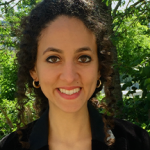This paper posits marriage market returns as a contributing factor to stagnant female labor force participation despite increasing female education. The paper examines the marriage market returns of female education by exploiting a very direct measure of returns: bride price, a significant amount of resources transferred by the groom at the time of marriage. The paper also looks at current and future husband’s wages as additional sources of returns. It addresses endogeneity and identification issues by exploiting a school reform in Egypt that reduced the number of years required to complete primary education from six to five. The staggered roll-out of the reform generates exogenous sources of variation in female schooling both across and within birth years and administrative units. The analysis implements an instrumental variable estimator with fixed effects at the birth year and at the administrative unit levels. The estimated return to a bride’s compulsory education is about 100% for bride price, about 14% for husband’s wage at the time of marriage, and about 16% for a measure of husband’s permanent income. Further empirical evidence suggests that educational assortative mating could be an important mechanism through which the marriage market returns are taking place.
ملخص
تفترض هذه الورقة أن عائدات سوق الزواج هي عامل مساهم في ركود مشاركة القوى العاملة النسائية على الرغم من زيادة تعليم الإناث. وتدرس الورقة عائدات سوق الزواج لتعليم الإناث من خلال استغلال مقياس مباشر للغاية للعائدات: قيمة المهر، وكمية كبيرة من الموارد التي حولها العريس وقت الزواج. كما تتناول الورقة أجور الزوج الحالي والمستقبلي كمصادر إضافية للعائدات. وهو يعالج قضايا التجانس وتحديد الهوية من خلال استغلال إصلاح المدارس في مصر الذي قلل من عدد السنوات اللازمة لإكمال التعليم الابتدائي من ست إلى خمس سنوات. ويولد التعميم المتدرج للإصلاح مصادر خارجية للتباين في تعليم الإناث سواء عبر سنوات الولادة أو داخلها أو في الوحدات الإدارية. وينفذ التحليل أداة تقدير متغيرة ذات آثار ثابتة في سنة الولادة وعلى مستويات الوحدات الإدارية. وتقدر العائد على التعليم الإلزامي للعروس بحوالي 100٪ مقابل مهرها، وحوالي 14٪ مقابل أجر الزوج وقت الزواج، وحوالي 16٪ لقياس الدخل الدائم للزوج. تشير أدلة تجريبية أخرى إلى أن التزاوج التربوي المتنوع يمكن أن يكون آلية مهمة يتم من خلالها تحقيق عائدات سوق الزواج.

Authors
Jingyuan Deng
Consultant, World Bank's Office of the Chief...

Research Associates
Nelly Elmallakh
Economist, World Bank's Office of the Chief...

Authors
Luca Flabbi
Professor and Director of Undergraduate Studies, Department...

Speakers
Roberta V. Gatti
Chief Economist, Middle East and North Africa,...


